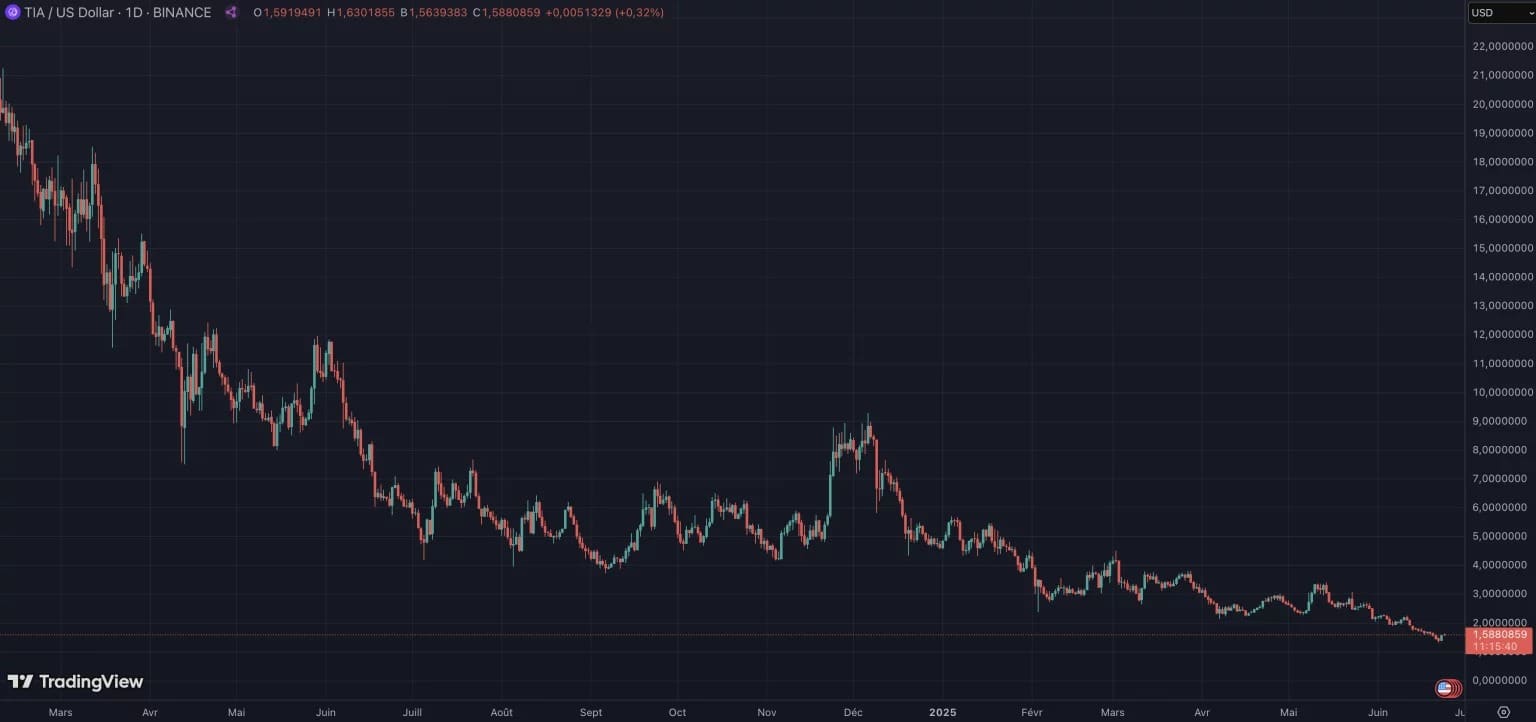Blockchains rely on consensus mechanisms that are more or less innovative, such as the classic Proof of Stake (PoS) widely tested by Ethereum. However, the co-founder of Celestia wants to abandon this solution in favor of a “Proof of Governance” version. What does this mean?
Celestia: TIA token inflation poses a problem
Every project developed in the cryptocurrency sector is based on tokenomics designed to manage the issuance and distribution of its tokens. This formula, which was initially community-based, has since given way to a model that is more favorable to early investors, such as venture capital firms.
As a result, the issuance of these native cryptocurrencies goes through regular token unlock procedures in order to bring an ever-increasing proportion of the available supply to market. This is particularly the case for the Celestia project, with unlocks that can sometimes reach $1 billion.

Celestia’s TIA token is down 92% from its last all-time high
Added to this logic is the principle of staking, which is directly linked to the proof-of-stake consensus mechanism. The problem? This formula, which appears very profitable for those seeking passive returns, involves the payment of rewards that some consider too high. This is particularly true given that the TIA token has fallen by more than 90% since its all-time high in February 2024.
This highly inflationary logic has been clearly highlighted by the project’s co-founder, John Alder, in a reflection published on the Celestia Forum. On the agenda: a proposal to develop a new experimental consensus mechanism called “Proof of Governance.”
Towards a new “Proof of Governance” consensus?
In order to remedy this proof-of-stake model, which is considered problematic for the development of the Celestia project, John Alder is proposing a new type of consensus. A formula stripped of what he identifies as “redundant steps.” That is, a pure and simple cancellation of rewards paid to stakers in order to focus on validators.
Proof of Governance (PoG) is the natural conclusion of staking derivatives. [It] would allow the protocol to reduce issuance by a factor of 20, from 5% to 0.25%, without lowering security.
John Alder
An internal dynamic change whose main consequence would be to allow the Celestia blockchain to gain more direct control over the revenue it generates, with the role of TIA token holders being reduced to choosing the network operators.
This new Proof of Governance consensus therefore renders the principle of staking completely unnecessary, as it is now separate from the activity of validators. This option is intended to avoid the use of liquid staking tokens (LSTs), which are considered complicated and unprofitable. It remains to be seen how the community will react.
